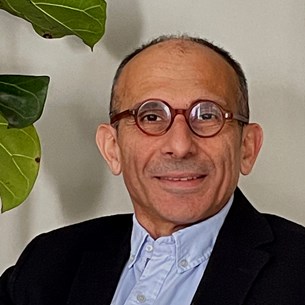Meeting
2021 Genitourinary Cancers Symposium

Istanbul University-Cerrahpaşa, Cerrahpaşa School of Medicine, Istanbul, Turkey
Mustafa Ozguroglu , Ajjai Shivaram Alva , Tibor Csőszi , Nobuaki Matsubara , Lajos Geczi , Susanna Y. Cheng , Yves Fradet , Stephane Oudard , Christof Vulsteke , Rafael Morales-Barrera , Aude Flechon , Seyda Gunduz , Yohann Loriot , Alejo Rodriguez-Vida , Ronac Mamtani , Evan Y. Yu , Kijoeng Nam , Kentaro Imai , Blanca Homet Moreno , Thomas Powles
Background: 1L pembro + chemo did not show statistically superior PFS and OS vs chemo for pts with advanced UC in the phase III KEYNOTE-361 study; OS for pembro vs chemo was not formally tested. We analyzed PFS2 (time from randomization to progressive disease [PD] on first subsequent therapy, or death from any cause, whichever occurs first) by study treatment and subsequent therapy in KEYNOTE-361 (NCT02853305) to determine the effects, if any, of therapy sequence on PFS2. Methods: PFS2 was estimated for pts in each treatment arm, who received any subsequent therapy including any anti–PD-(L)1, any therapy other than anti–PD-(L)1, or no therapy. These were exploratory analyses; no formal comparisons were done. Results: 1010 pts were randomized: 351 pts to receive pembro + chemo, 307 to pembro, and 352 to chemo. As of Apr 29, 2020, the median (range) time from randomization to data cutoff was 31.7 (22.0-42.3) mo. Subsequent therapy was received by 124/351 (35%), 126/307 (41%), and 215/352 (61%) pts in the pembro + chemo, pembro, and chemo arms, respectively. Subsequent anti–PD-(L)1 therapy was received by 169/352 (48%) pts in the chemo arm vs 23/351 (7%) in the pembro + chemo arm and 14/307 (5%) in the pembro arm. Of pts in the pembro arm who received subsequent therapy, >90% received 2L cisplatin-based or carboplatin-based treatment. Median (m) PFS2 (95% CI) for all pts by treatment arm was 14.1 mo (12.6-16.2) with pembro + chemo, 10.9 mo (9.5-12.9) with pembro, and 10.4 mo (9.8-11.2) with chemo. Across treatment arms, pts in the pembro + chemo arm had the longest mPFS2 with any subsequent therapy (14.5 mo [95% CI 13.1-16.6]) (Table). Pts in the pembro arm who received no subsequent therapy had a longer mPFS2 (12.9 mo [95% CI 8.1-17.9]) vs pts in the chemo arm who received no subsequent therapy (9.4 mo [95% CI 7.6-10.6]). Finally, pts treated with 1L pembro in the trial followed by 2L therapy other than anti−PD-(L)1 had comparable mPFS2 (10.2 mo [95% CI 8.6-12.1]) to pts treated with 1L chemo in the trial followed by 2L anti−PD-(L)1 (11.1 mo [95% CI 10.2-12.9]). Conclusions: In this exploratory analysis, treatment sequence of chemo followed by anti−PD-(L)1 upon PD vs anti–PD-(L)1 followed by chemo upon PD did not appear to impact mPFS2. Among pts who did not receive 2L therapy, 1L pembro appeared to be associated with longer mPFS2 than chemo, potentially driven by long-term responders to pembro. Clinical trial information: NCT02853305.
| Arm (n/n) | mPFS2, mo (95% CI) by subsequent therapy | |
|---|---|---|
| Anti–PD-(L)1 | Other than anti–PD-(L)1 | |
| Pembro + Chemo (23/101) | a | 13.8 (11.8-15.8) |
| Pembro (14/112) | b | 10.2 (8.6-12.1) |
| Chemo (169/46) | 11.1 (10.2-12.9) | 10.8 (8.3-13.6) |
a Based on small pt number (n=23); mPFS2 (95% CI) was 17.3 mo (14.8-27.0) b Based on small pt number (n=14); mPFS2 (95% CI) was 11.7 mo (9.1-22.3)
Disclaimer
This material on this page is ©2024 American Society of Clinical Oncology, all rights reserved. Licensing available upon request. For more information, please contact licensing@asco.org
2021 Genitourinary Cancers Symposium
Poster Session
Poster Session: Urothelial Carcinoma
Urothelial Carcinoma
Therapeutics
NCT02853305
J Clin Oncol 39, 2021 (suppl 6; abstr 448)
10.1200/JCO.2021.39.6_suppl.448
448
Online Only
Abstract Disclosures
2021 Genitourinary Cancers Symposium
First Author: Ajjai Shivaram Alva
2023 ASCO Annual Meeting
First Author: Bradley J. Monk
2024 ASCO Gastrointestinal Cancers Symposium
First Author: Zev A. Wainberg
2024 ASCO Gastrointestinal Cancers Symposium
First Author: Manish A. Shah